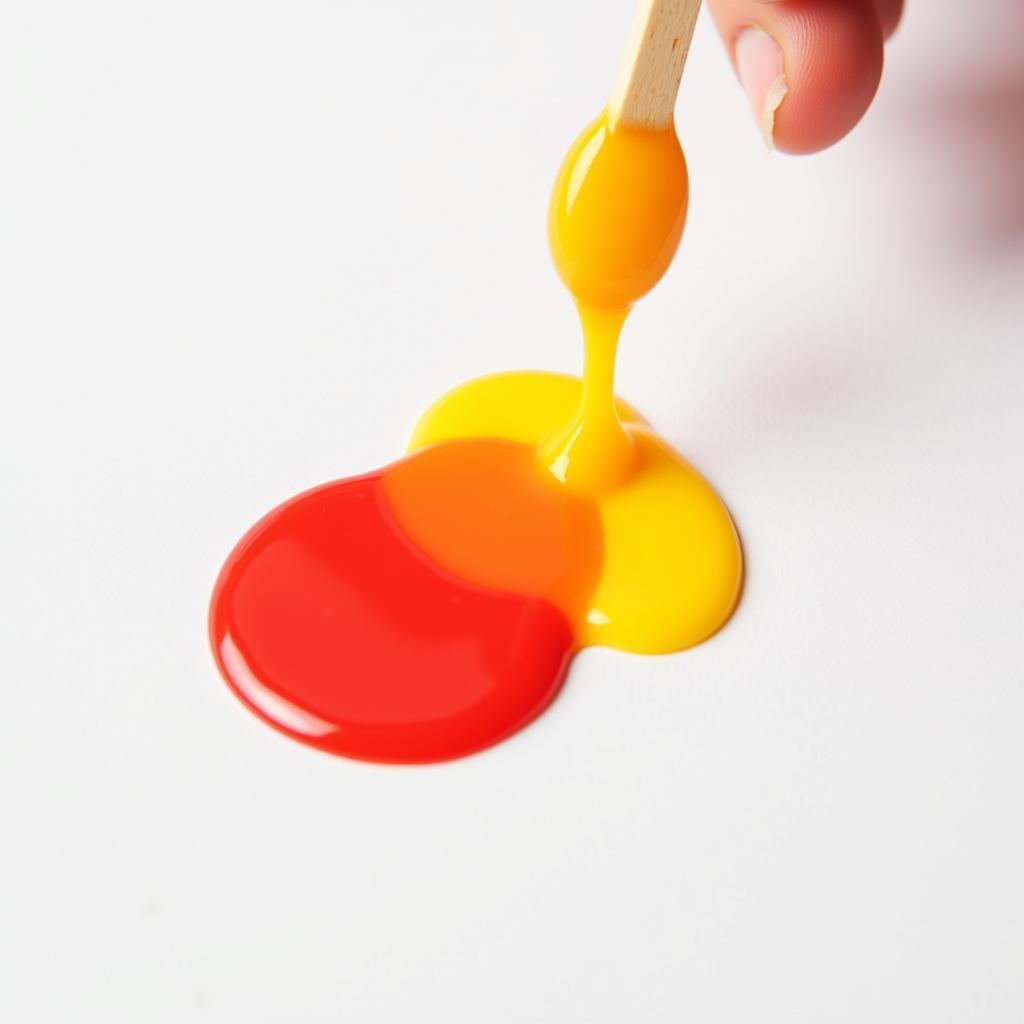Creating the perfect shade of orange for your culinary creations is easier than you might think! Whether you’re frosting a cake, dyeing Easter eggs, or adding a pop of color to your homemade playdough, achieving a vibrant orange hue is just a matter of mixing primary colors. Let’s explore the world of food coloring and discover the simple steps to making orange.
Unveiling the Magic: What Colors Make Orange Food Coloring?
The answer lies in the color wheel! Orange is a secondary color, which means it’s created by combining two primary colors: red and yellow.
 Mixing Red and Yellow Food Coloring
Mixing Red and Yellow Food Coloring
How to Make Orange Food Coloring with Red and Yellow: A Step-by-Step Guide
Follow these easy steps to mix the perfect orange:
- Start with a white base: If you’re adding color to frosting, batter, or any other base, begin with a white or light-colored base for the most vibrant results.
- Add drops of red food coloring: Begin by adding one or two drops of red food coloring to your base. Remember, it’s easier to add more color gradually than to lighten an overly saturated mixture.
- Introduce yellow food coloring: Add one or two drops of yellow food coloring to the mixture.
- Mix thoroughly: Using a whisk, spoon, or toothpick, mix the colors thoroughly until you achieve a uniform orange shade.
- Adjust the shade:
- For a more reddish-orange, add one drop of red at a time.
- For a more yellowish-orange, add one drop of yellow at a time.
Tips for Creating the Perfect Orange with Food Coloring
- Start with small amounts: It’s always easier to add more color, so begin with a drop or two of each primary color and adjust gradually.
- Test the color: Before adding the food coloring to your entire mixture, test the color on a small portion. This allows you to fine-tune the shade before committing.
- Consider the type of food coloring: Gel food coloring tends to produce more vibrant colors compared to liquid food coloring.
- Natural food coloring alternatives: For a natural approach, you can experiment with beet juice for red and turmeric for yellow. However, keep in mind that natural dyes might yield more subtle results.
Achieving Specific Orange Shades: Pumpkin Orange and More
- How to Make Pumpkin Orange with Food Coloring: To achieve a classic pumpkin orange, start with a higher ratio of yellow to red. Add drops of red gradually until you achieve the desired depth of color.
- Exploring Other Orange Variations: Don’t be afraid to experiment! You can create a spectrum of orange hues by adjusting the ratios of red and yellow.
Conclusion
Making orange with food coloring is a fun and simple process that opens a world of creative possibilities in the kitchen. By understanding the basic principles of color mixing and following these easy steps, you can confidently create vibrant and customized orange hues for all your culinary creations. So, unleash your inner artist and let the color orange bring a touch of sunshine to your next culinary masterpiece!

